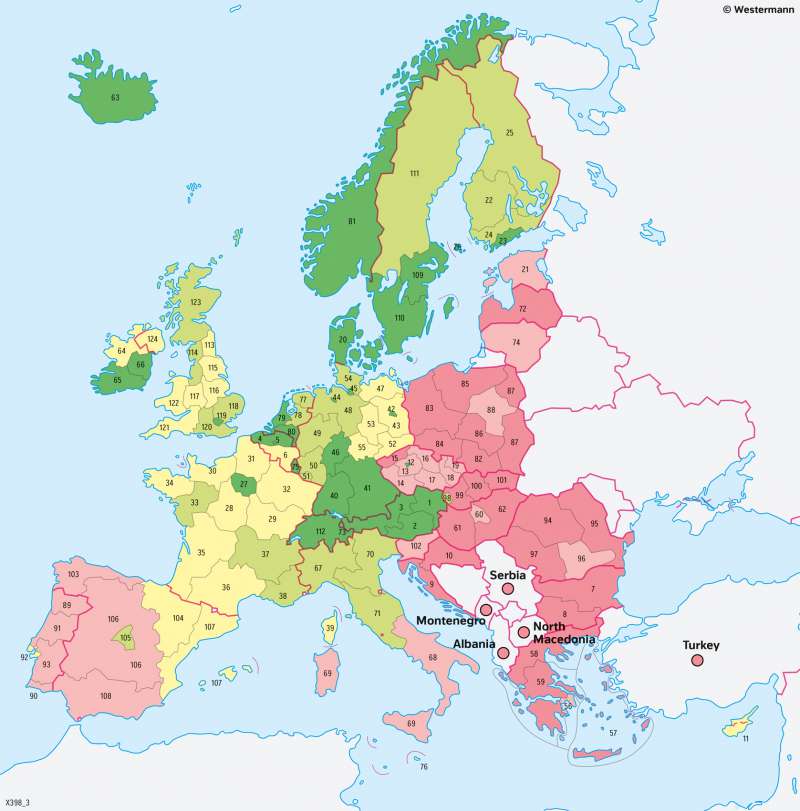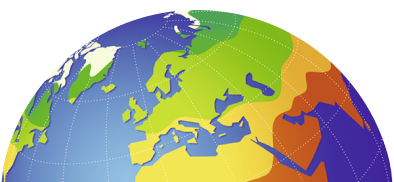European Economic Area (EEA) - Regional economic output
European Union
978-3-14-100890-6 | Page 67 | Ill. 4

Overview
The prosperity gap in the European Union has widened considerably since 2004. The reason for this was, on the one hand, the admission of new member states from Eastern Europe and, on the other hand, the economic consequences of the financial and European debt crisis from 2007 onwards.
Regional disparities within the EU
Apart from a few exceptions, such as sub-regions in Finland, Sweden and Ireland, there is a clear income gap between the rich regions of Central Europe - the economic core of the EU - and the much poorer regions on the periphery. The lowest economic power is present in the countries of Eastern Europe, especially Bulgaria, Romania, Hungary, Croatia, and Latvia, but also large parts of Poland and Slovakia. The EU accession of these states has done little to change the strong disparity in prosperity compared to Central Europe.
Greece, on the other hand, which a few years ago was still at a similar level to France, has been plunged into a debt crisis in the wake of the international financial crisis. The extent of the disparities within the members can be seen in the comparison of national purchasing power, which is about 20 times greater in Luxembourg, the country with the highest purchasing power, than in Bulgaria, for example. Germany is in the top third in the EU comparison.
How to measure disparities
Economic strength and regional wealth disparities are determined by gross domestic product (GDP), despite some difficulties in terms of meaningfulness and comparability. It is determined by the value of all goods and services produced in a region within a period of time. The conversion of GDP into purchasing power in Euros also takes into account regional price differences and thus determines regional prosperity somewhat more precisely.
Disparities within EU-member states
Disparities within countries are generally smaller than between states, but here, too, there are exceptions. In Ireland and Italy, for example, there are pronounced differences between the south and the north. Capital regions also often have significantly higher levels of productivity and purchasing power than other parts of the country, as can be seen in Spain and France, Slovakia, and Hungary. In Germany, disparities exist especially between the western and eastern federal states, which can still be traced back to the different political and economic developments in the decades before reunification in 1990.
A comparison of the gross domestic product per inhabitant with the importance of individual economic sectors reveals that a high proportion of employees in agriculture is usually accompanied by low economic and purchasing power, while in regions with a strong emphasis on services there is often a significantly higher level of production and income. But even here there are exceptions. In the Netherlands, for example, productive agriculture ranks high in terms of exports, employees and share of the country's economic output, yet the Netherlands is one of the most developed member states of the EU.




